History
For over 180 years, STRABAG SE has been working on progress – with innovative strength and technical expertise.
Journey through time
Since its origins, the company has evolved, mastered challenges and grown into one of the largest European construction groups – without losing sight of its history.
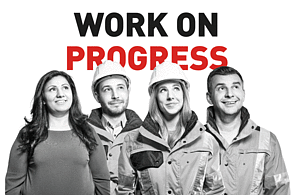
Since 2022
Work On Progress – with its Strategy 2030, STRABAG has set itself the goal of becoming climate-neutral by 2040. Operating globally and locally with a diversified portfolio of services, STRABAG is building for the future. First under Klemens Haselsteiner and today under Stefan Kratochwill as CEO and with 86,000 employees, STRABAG is focused on the pillars People. Planet. Progress in order to consolidate and expand its role as a technology leader in the construction industry.
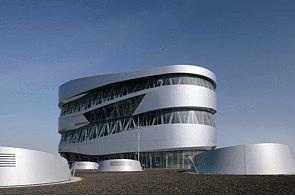
2000 - 2021
Construction sites show significant advances – digitally and sustainably. In addition to planning software and Building Information Modelling (BIM), construction equipment receives digital support systems and the first construction robots are used for office construction. Resource-saving processes and procedures are also essential for continued evolution and contribute to the first company receiving basic certification from the DGNB (German Sustainable Building Council) as a “sustainable construction site” in 2021.
It is also the period in which acquisitions such as that of ZÜBLIN enable the expansion of one of the biggest European construction groups, which begins operating under the name STRABAG SE as of 2006.
It is also the period in which acquisitions such as that of ZÜBLIN enable the expansion of one of the biggest European construction groups, which begins operating under the name STRABAG SE as of 2006.
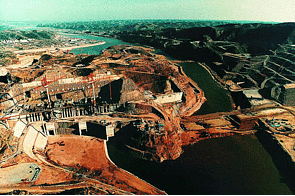
1980 - 1999
The course leading to STRABAG SE is established in the 1990s: BAU HOLDING AG and STRABAG AG become affiliates.
Yet it is more than just the corporate structures that are transformed during this time. German reunification opens up new markets and opportunities. For example, skills in the construction of transport infrastructure contribute to the critical expansion of the railway network in the new federal states. And infrastructure projects, such as the Oswaldiberg Tunnel, are not only carried out locally, but globally as well, as with the construction of the Xiaolangdi multi-purpose dam on the Yellow River.
Yet it is more than just the corporate structures that are transformed during this time. German reunification opens up new markets and opportunities. For example, skills in the construction of transport infrastructure contribute to the critical expansion of the railway network in the new federal states. And infrastructure projects, such as the Oswaldiberg Tunnel, are not only carried out locally, but globally as well, as with the construction of the Xiaolangdi multi-purpose dam on the Yellow River.
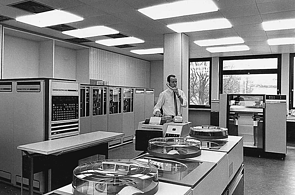
1960 - 1979
Innovative technologies and business models are introduced and become a formative factor in business development. This leads to the first use of a hydraulic tunnel boring machine in Austria and the construction of the world’s longest road tunnel at the time – the Arlberg Tunnel. During this time, turnkey construction is also established and propels the industrialisation of construction.
The importance of electronic data processing, which was recognised as early as 1961 and has been used successfully ever since, is visionary for the construction industry.
The importance of electronic data processing, which was recognised as early as 1961 and has been used successfully ever since, is visionary for the construction industry.
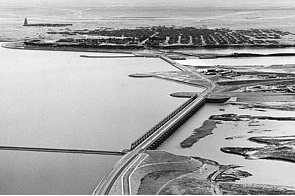
1946 - 1959
In 1953, the construction of the Wadi Tharthar dam on the Tigris marks the beginning of major international projects – a challenge for construction and for organisation. Two years later, STRABAG Nigeria Ltd. marks the company’s entry into business on a global scale. But not only is the Group’s expertise in demand internationally, its know-how is also valued on a local basis, as demonstrated by the construction of industrial buildings such as the magnesite plant in Hochfilzen. The expansion of the range of services and development of new business areas is exemplary of the boom in the years of the so-called Wirtschaftswunder, or economic miracle.

1933 - 1945
After the National Socialists came to power, STRABAG companies continued their construction activities and received orders from industry and the regime.
“For us as the STRABAG Group, participation in the Reconciliation Fund and the EVZ Foundation was and is also an acknowledgement of our own moral and historical responsibility, which we want to continue to bear. We must stand up for a 'never again' with a clear stance,” says CEO Stefan Kratochwill.
“For us as the STRABAG Group, participation in the Reconciliation Fund and the EVZ Foundation was and is also an acknowledgement of our own moral and historical responsibility, which we want to continue to bear. We must stand up for a 'never again' with a clear stance,” says CEO Stefan Kratochwill.
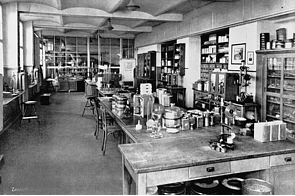
1911 - 1932
On into the early years, the company stands out due to its technical excellence and research. Buildings are constructed and world records achieved – such as the Langwieser Viaduct with an arch span of 100 metres. Research into modern construction materials is also carried out in the laboratory established in 1927. The later STRABAG-Zentrallaboratorium achieves numerous pioneering feats, such as the production of permanent bituminous surfacing in road construction.
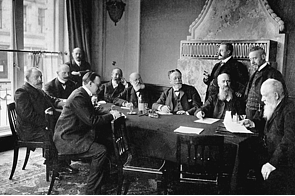
1835 - 1910
Every story starts somewhere. That of the STRABAG Group of today begins in 1835 with the founding of Familienhandwerksbetrieb Anton Lerchbaumer, a family-run craftsmen’s business, in the Austrian town of Spittal – the origin of ILBAU.
60 years later, in 1895, the former agricultural machinery manufacturer Heinrich Reifenrath and 12 other partners joins forces in Niederlahnstein near Koblenz, Germany, to found Straßenwalzenbetrieb vormals H. Reifenrath Gesellschaft mit beschränkter Haftung. STRABAG’s namesake Straßenbau-Actiengesellschaft emerges from this company in 1923.
60 years later, in 1895, the former agricultural machinery manufacturer Heinrich Reifenrath and 12 other partners joins forces in Niederlahnstein near Koblenz, Germany, to found Straßenwalzenbetrieb vormals H. Reifenrath Gesellschaft mit beschränkter Haftung. STRABAG’s namesake Straßenbau-Actiengesellschaft emerges from this company in 1923.